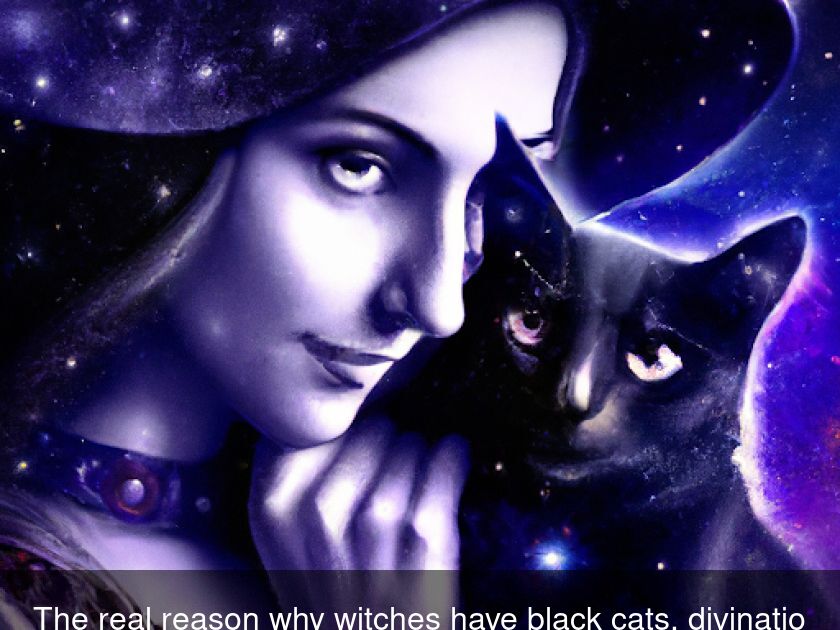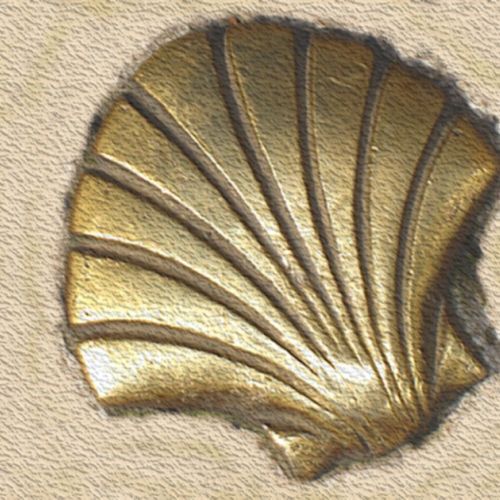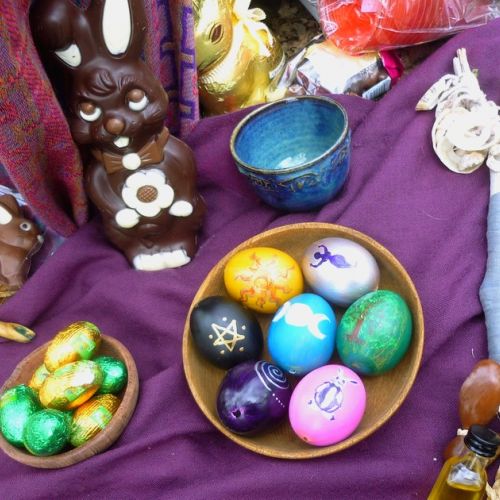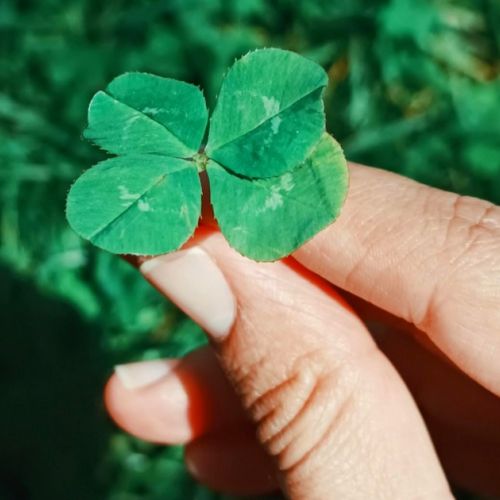The Real Reason Why Witches Have Black Cats.
Black cats do not have a good reputation. They have always been associated with things like bad luck, witchcraft, and the strange aspects of Halloween. But where did all this begin?
Black cats
In the 14th century, black cats were once considered gods, but their reputation quickly deteriorated. The black cat became associated with evil during the Middle Ages. This was due to the fact that they were creatures of the night.
Witchcraft also significantly contributed to the bad reputation of cats. As being in tune with nature was an important aspect of witchcraft, having a cat as a pet was typical. Cats, like witches, are nocturnal and roam at night, which led to the assumption that they were magical servants. As the black cat was associated with the devil, many of them died during the Black Plague epidemic (although cats actually helped kill the rats that spread the plague). The term "witchcraft" has a negative image, but it actually means "wisdom." When witches claimed to be able to perform magic, they were actually concocting unique potions to aid in the healing of the sick. It was then that the Christian Church spread the myth that their magical abilities came from the Devil.
Others believed that cats were actually humans who had committed bad deeds and were forced to come back into the world, and although it is hard to believe that anyone ever thought these magnificent animals were evil, these beliefs eventually led to the superstitions that people have about black cats, which still persist today.
The Salem witch trials and the cats
We have all heard of the connection between black cats and witches. This stereotype is deeply ingrained in popular culture, from Sabrina the Teenage Witch to Thackery Binx in Hocus Pocus. However, the cat as a devil's emissary or witch's familiar is not a Hollywood creation; it has a historical precedent in witch trials.
The link between our feline companions and magic, especially regarding the infamous Salem witch trials in 1692, is tied to several documented cases of cats being used as evidence against the accused.
Tituba, an enslaved woman, was one of the first to be accused during the trials. She initially claimed innocence, but throughout her interrogation, which included violent and humiliating questioning and physical inspection, she eventually "confessed." When asked if she had seen anything unusual, Tituba replied: "I saw two cats, one red, one black [and] as big as a small dog." When asked what the cats told her, she said: "They say to serve them." Godbeer (86).
A few months later, during the examination of Sarah Wilson Sr., Reverend Increase Mather wrote that she saw the devil. When asked to explain the devil's appearance, Mather stated that the devil appeared to her in the form of a cat.
However, the most intriguing references to cats in the Salem witch trials documents are found in relation to Samuel Wardwell. According to these documents, Wardwell observed a group of cats behind the Bradstreet family's house twenty years before the trials, the Bradstreets including the first published poet in the American colonies, Anne Bradstreet, and her husband, Massachusetts Governor Simon Bradstreet.
"Constable Foster of Andover reported... that once, when [Wardwell] was discontented, he saw cats and the appearance of a man who called himself prince of the air and promised [him] that [he] should live well and be a captain, and needed the said Wardwell to honor him," Id., p. 142).
Wardwell was one of the last people hanged in Salem as an alleged witch, along with seven others. In his lifetime, he was reputed to be a Quaker, an amateur fortune-teller, a farmer able to make his cattle follow him on command, and essentially a "witch." It is worth noting, however, that none of the accused were witches and there is no evidence that those who were unjustly imprisoned, tortured, or hanged during the witch hysteria practiced any form of magic, except for the occasional "witch cake," also known as urine cake, that some used as a form of "counter-magic."
The polydactyl cat, which means it has seven claws on each front paw instead of five.
Polydactyly, which is relatively common in cats, gives these animals a distinct appearance that has been associated with magic over the years. As the coastal region of New England now has one of the highest incidences of feline polydactyly (Lettice, 979), it is possible that polydactyl cats were among the first introduced to the New World by the early Puritans. Even Tituba's "talking cats" may have been polydactyl.
We know that black cats were persecuted during the witch trials. It is important to remember that fear of the unknown or the strange went hand in hand with fear of witchcraft and the devil. In the early Puritan civilization of Salem, God blessed the "civilized" society of towns and villages, while the untamed woods were where witches danced with the devil. All cats and animals had the potential to be sources of fortune, misfortune, or familiar spirits.
The Aître Saint-Maclou in Rouen, France, has a preserved non-polydactyl cat that is said to come from a black cat and is intended to ward off bad luck. Cats were often used as shipboard mascots on long voyages, and polydactyl cats were also considered lucky charms (Hartwell). It can be assumed that this genetic anomaly sometimes made them targets in witch trials. During the witch trials, polydactyl cats may have had an even harder time than their toe-reduced brethren, especially since a simple encounter with a cat could lead to a trip to the gallows. Fortunately, no cats were killed during the Salem witch trials, but two dogs were executed as familiars. Nevertheless, I believe most cats are better off these days.
Some individuals associate magic with creativity. If that's the case, the polydactyl cat may have been the companion or muse of Ernest Hemingway. According to Hemingway, a ship captain once gave him a polydactyl cat named Snow White. He fell in love with the cat's extra toes and bred his children to have this mutation. Therefore, a Hemingway cat is another term for a polydactyl cat. Today, the Hemingway Museum in Key West, Florida, is home to 40 to 50 polydactyl cats, most of which are descendants of Snow White.
WITCHCRAFT AND CATS
Due to religious instability, Henry VIII enacted a law against witchcraft in 1542, making it a crime punishable by death. Although most people believed that cats were evil, the cunning Cardinal Wolsey seemed to greatly appreciate them. To the point where he would let these divisible creatures sit beside him on his chair when delivering crucial speeches.
The oldest witch trial known as the Chelmsford trial took place in an English secular court in 1556 and included a cat. In Chelmsford, Essex, the old and weak Elizabeth Francis was accused of witchcraft and confessed to her crime. As the granddaughter of a witch, Elizabeth had been trained in dark arts since the age of 12. Her grandmother had also given her a white-spotted cat named Satan, who ate bread and milk and occasionally begged for drops of Elizabeth's blood in exchange for its services. Initially, Elizabeth only sought money and asked her cat to provide her with lambs, which it did. Unfortunately for Elizabeth, these ill-gotten sheep all perished, leaving her as destitute as before. She then asked her familiar Satan to marry her to Andrew Byles, a wealthy man. The cat insisted that she let Byles have his way with her first, and then he would refuse to marry her. She asked the cat to take all her money and kill him, which Satan did. She asked for another husband, and the cat offered her a marriage with a not-so-rich man, with whom she had a daughter. She begged Satan to murder the vulnerable girl as she was unhappy in her marriage and with her little girl. This was done, and the girl died at the age of six months. Subsequently, Elizabeth's husband became lame when the cat lay in his shoes and transformed into a toad.
Satan the cat and the first witch trials
After hosting Satan for nearly 15 years, she entrusted him to Agnes Waterhouse, better known as Mother Waterhouse, who was 64 years old at the time. Agnes was the first woman to be hanged for witchcraft as she was accused of murdering William Fynne and killing many animals belonging to her neighbors with the powers of her familiar, the cat Satan. Agnes was executed in 1566, and Elizabeth in 1579. Elizabeth spent over 10 years going back and forth in prison before being accused in 1578 of causing the death of Alice Poole through witchcraft.
Waterhouse, Agnes is the first person executed for witchcraft in 1566.
Wikipedia is the original source.
Both executions took place after Queen Elizabeth I enacted a stricter new law on witchcraft in 1563. The queen, who is not a fan of cats, had a large number of them placed inside a effigy of the pope and burned for amusement during her coronation ceremony.
A magical tale of cats and witches.
Cats are amazing beings. Their magical elegance has been observed, revered (but also vilified) and integrated into art and mythology since ancient times. Cats seem to have one foot in the realm of spirits, their sharp eyes constantly looking just beyond the veil. They are graceful, intelligent, and somewhat aloof. It is therefore not surprising that cats are most often associated with witches. Cats and witches have an energetic similarity in that they both have a keen awareness of their environment while living in their own cryptic realms. Cats, like witches, know exactly what they want and can be difficult to manage. A cat can be the most affectionate friend, but don't expect it to give up its independence.
Cats and witches both represent the feminine archetype. They inhabit nocturnal places where intuition reigns and quick, subtle movements triumph over macho aggression. Cats have always been associated with magic and the feminine, sometimes in a positive light, sometimes in a negative one.
Ancient cultures and cats
Egypt is undoubtedly the most well-known ancient civilization for its reverence of cats. Cats were worshipped to the extent that it was believed their souls experienced the same afterlife as human souls. Numerous tomb murals depict cats alongside human families. While cats are often portrayed as hunting partners, they are also depicted as companions and domestic cats, peacefully living alongside their masters in domestic environments. There was no discrimination between wild cats and domestic cats in the household; all cats were welcome.
Female goddesses were associated with cats. Bastet and Sekhmet, two popular Egyptian gods, are feline deities. Bastet is the goddess of cats, represented in the form of a cat or a woman with a cat's head, and she reigns over the home, fertility, and protection. Harming a cat was considered a crime against Bastet. Cats were seen as avatars of the goddess and were kept in her temple by priests. As for Sekhmet, depicted with a lion's head, she is the fiercest hunter of the Egyptians and the defender of pharaohs, whom she guides in battle.
Both Bastet and Sekhmet, daughters of the Sun deity Ra, are connected to the Eye of Ra, also known as the Eye of Horus. It is considered a protective emblem, but it is also linked to the destructive heat of the sun. Cats were also seen as having a dual nature: domestic friends who defended the home and formidable predators.
In some mythologies, feline monsters are intertwined with stories of magical women. Cats are associated with powerful women, but also with danger and duplicity. Diana, the goddess of hunting, the moon, and mistress of magic and sorcery in Greek mythology, transforms into Lucifer's beloved pet cat to enter his chamber and seduce him. Freya, the goddess of fertility, war, and death in Norse mythology, leads the Valkyries into battle to gather fallen soldiers, aboard a chariot driven by two fierce blue cats: Bygul and Trjegul. And according to Hebrew tradition, Lilith, who was expelled from the Garden of Eden for refusing to submit to Adam, transforms into El Broosha, a black vampire cat that preys on newborns.
Cats in the Middle Ages
Cats elicit a very different reaction in medieval civilization.
Because the cat "stands at the border between the familiar and the wild," men of the Middle Ages may have wanted to limit cats to the function of animated mouse traps. "Cats were intruders in human civilization. They could not be owned. They slipped into the house like mice and were punished because they kept intolerable mice under control." This creates a certain conceptual tension. The cat is beneficial as long as it possesses the attributes of a skilled hunter, "but as long as it is so, it remains incompletely tamed." Heretics, too, are not completely tamed in the sense that they challenge conventional thinking and roam freely here and there in their interpretation of religious ideas, like the concept of wildness from the bestiary. The cat may be the most heretical animal in terms of symbolic animals.
Cats were condemned for their frank independence, like Lilith, who refused to be tamed and forced into a life of servitude. They were seen as beings who supported the devil and all things evil. Pope Gregory IX issued a public edict in 1233 formally linking cats to witchcraft and, more specifically, to Satan. The ordinance, Vox in Rama, was published in response to rumors of satanic organizations in Germany, which depicted black cats as part of devil worship rites. Some historians believe this led to the total extinction of cats in Europe, but this hypothesis is not universally accepted.
Nevertheless, the stigmatization of cats, especially black cats, was real and accompanied the early witch hunts of modern Europe. Countless women convicted of witchcraft were executed between the 15th and 18th centuries. It was possible to be accused of witchcraft simply by having a cat. Witches were said to transform into cats to murder newborns and children, or to ride cats at night to attend Sabbath celebrations. Cats, like witches, were killed by being burned and thrown from towers. Black cats were particularly feared. Even today, black cats are less likely to be adopted, and they are more likely to be tortured or killed due to backward thinking.
Despite the lingering effects of discrimination against black cats, cats have regained favor in the public eye. It may not be surprising that the rise of the witch and the reclamation of the divine feminine coincide with the popularity of all things cat on the Internet. Let us pay tribute, we witches, to our feline counterparts, who historically have been revered and reviled for their spiritual abilities and unwavering independence.
Learn more
The witch represents an uninterrupted connection with our wild nature, a pursuit of mysticism (and inner magic), a trust in our intuition, and an affirmation of our creative ability, in addition to the worship of felines. We invite you to learn more about this fascinating archetype through our articles on the subject.






